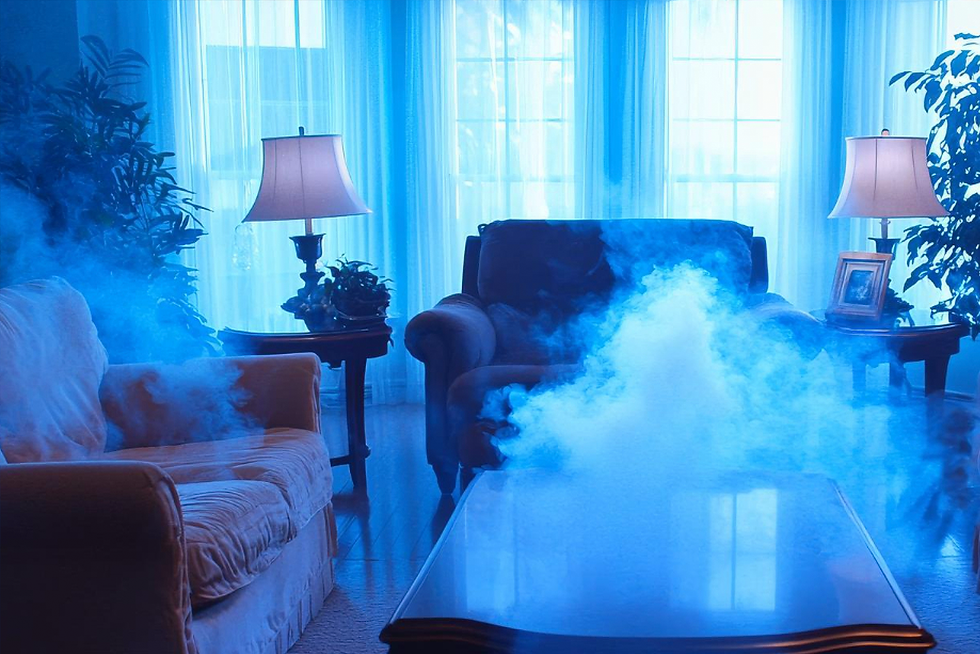DOE Issues New Health and Safety Guidance for Weatherization Assistance Programs
- Corey Provencal

- Feb 3, 2011
- 3 min read
On January 12, 2011 the Department of Energy (DOE) issued new Health and Safety Guidance for its Weatherization Assistance Program (WAP) grantees. The new guidance provides recommendations to grantees as they develop their health and safety plans and procedures. When making decisions on how to address health and safety issues during weatherization work, this document will be a critical reference.
Here are some of the highlights of the guidance regarding specific health and safety activities and allowable costs:
Asbestos/Vermiculite – When vermiculite is present, unless testing determines otherwise, take precautionary measures as if it contains asbestos; do not use blower door tests or personal air monitoring while in attics. Encapsulation by an appropriately trained asbestos control professional is allowed. Removal is not allowed. Testing: Assess whether vermiculite is present. Asbestos Hazard Emergency Response Act of 1986 (AHERA) certified prescriptive sampling is allowed by a certified tester.
Mold – Remediation of conditions that may lead to or promote biological concerns is allowable; visual assessment required; provide client education. Where severe mold and moisture issues cannot be addressed, deferral is required. Testing: Visual assessment is required and diagnostics such as moisture meters are recommended prior to final inspection. Mold testing is not an allowable cost.
Building Structure and Roofing: Building rehabilitation is beyond the scope of WAP. Homes with conditions that require more than incidental repair should be deferred. Testing: Visual inspection. Ensure that access to areas necessary for weatherization is safe for entry and performance of assessment, work, and inspection.
Combustion Safety – Proper venting to the outside for combustion appliances, including gas dryers is required. Correction of venting is allowed when testing indicates a problem. Testing: Combustion safety testing is required when combustion appliances are present. Inspect venting of combustion appliances and confirm adequate clearances. Test naturally drafting appliances for draft and spillage under worst case conditions before and after air tightening. Inspect cooking burners for operability and flame quality.
Formaldehyde, Volatile Organic Compounds (VOCs) and other air pollutants – Removal is allowed if required and if there is a risk to workers; client education is recommended.
Injury Prevention – Take reasonable precautions to prevent worker risks; conduct minor repairs when needed to weatherize homes; client education is recommended.
Lead-Based Paint– Follow EPA’s Renovation, Repair and Painting (RRP) guidelines. Testing is an allowable expense. Note: This guideline is a change.
Pests – Pest removal is allowed where infestation would prevent weatherization. Screening windows and points of access allowable to prevent intrusion (see Table for allowances); assessment of pest presence recommended.
Radon – When conditions permit, exposed dirt must be covered with a vapor barrier except for mobile homes; in homes where radon may be present, precautions should be taken to reduce the likeliness of making radon worse. Testing: may be allowed in locations with high radon potential. Training recommended.
Smoke/CO Alarms – These are allowable expenses; client education is recommended.
Spray Polyurethane Foam – Must use EPA recommendations when working within the conditioned space. Click here for full list of EPA recommendations.
Ventilation – Following 2010 American Society of Heating, Refrigerating and Air-Conditioning Engineers (ASRAE) 62.2 is required to the fullest extent possible; ASRAE 62.2 is not required where acceptable air quality exists as defined by 62.2. The 2010 update encourages home retrofits to improve indoor air quality through allowance of alternative methods for meeting the current standard requirement of having exhaust fans in the kitchen and bathroom. Testing: 62.2 Evaluation; fan flow; then conduct follow up testing.
Click here for the complete guidance.
•John P. Lapotaire, CIEC •Certified Indoor Environmental Consultant •Microshield Environmental Services, LLC •www.Microshield-ES.com
#microshield #IESO #FloridaDBPR #Chapter468 #HB5007 #indoorairquality #SenateBill2234 #mold #IEQ32 #LEED #DepartmentofBusinessandProfessionalRegulation #moldpretreatment #MoldRelatedServicesLicensingProgram #SB1244 #PCBBCAS1101 #HB4171 #moldtesting #moldprevention #IndoorEnvironmentalStandardOrganization #healthyhome #USGBC #ResidentialMoldAssessment #HB5005 #FloridaStatutes #moldinspection #moldremoval #moldremediation #ASTM #johnlapotaire #newhomemold #PartXVI #JohnPLapotaire #HouseBill713 #ciec #airquality









Comments